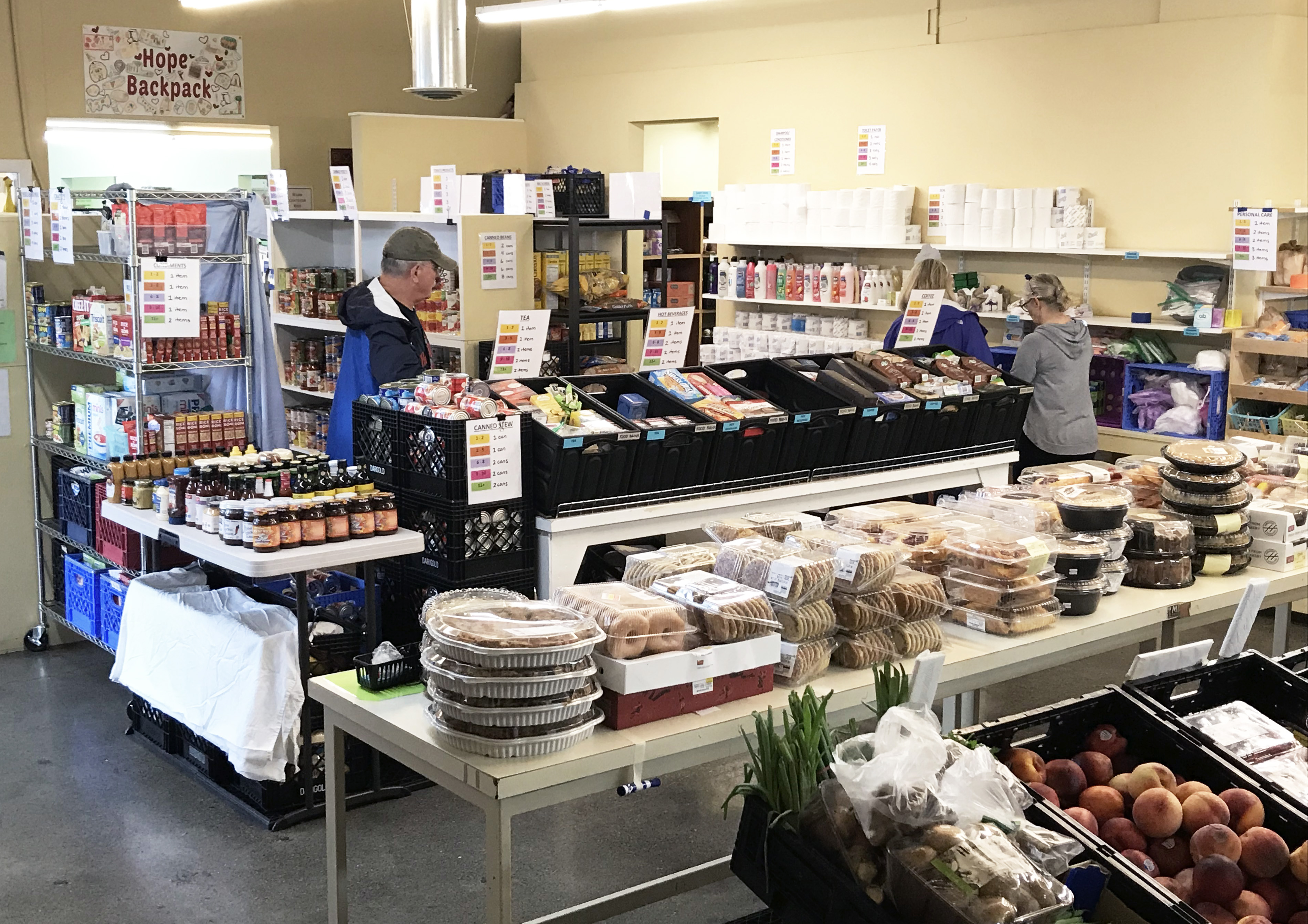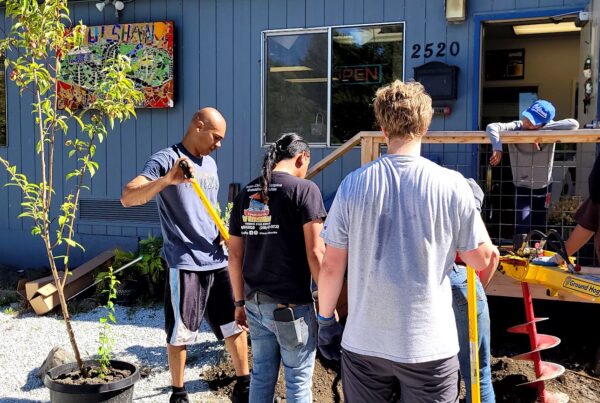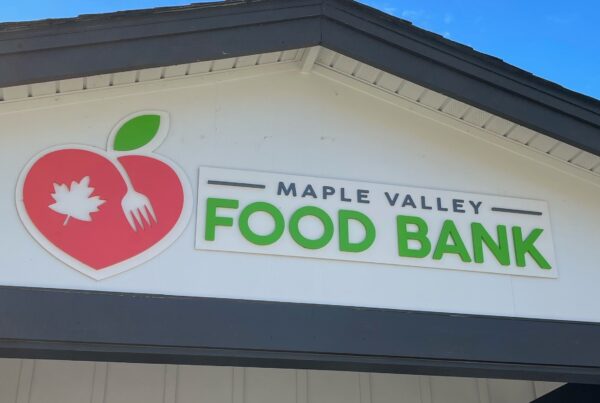
Last August, a team of 20 people transformed the Stanwood Camano Food Bank (SCFBS) into a Neighborhood Market. This 3-year vision became a reality with the support of countless community members. SCFBS received operational help from UW Bothell’s Business Operations Master’s students. The students recommended inventory adjustments to support a grocery distribution model. A volunteer mechanical engineer used a computer program to map potential floor plans. They wanted to design a new layout that ensured a good flow of people walking through their facility. The layout also allowed them to share the next steps with their volunteers and board members. Volunteer support of this change was critical to their success.
Before changing models, the team at SCFBS researched the process to avoid unexpected surprises. According to SCFBS Director Lynne Ayers, “we still had surprises!” With the new distribution model, they went from serving 8 members at a time to about 20 (SCFBS uses the word “members” for the folks who access their food bank). They first ordered 10 shopping carts for the Neighborhood Market. To accommodate the increased number of members served, they ended up ordering 12 more. The new distribution model also caused a big shift in volunteer time. Volunteers spent time replenishing shelves rather than handing out product. Luckily, the team was willing to adapt and change direction as needed. Now, a team of volunteers comes in after closing to restock for the next distribution day.
Since their August soft open, SCFBS continues to adapt. They corrected their process to address unexpected bottlenecks. Members, volunteers, and staff are so excited the food bank is where it is now. Lynne sees more conversations happening between everyone at the food bank. Members and volunteers exchange bags, stories, and recipes. Staff and volunteers reassure members that they can take what they need and come back next week. This had led to an interesting discovery: members now take about 12 pounds less per person per visit. Many are shopping on a weekly basis. Members deciding what they bring home brought higher member satisfaction and empowerment.
For everyone at SCFBS, the grocery store model has reinforced the idea that “choice is magical.” Changing to the new model increased efficiency, reduced waste, and created more opportunities for interaction. Lynne Ayers says, “the future of food banking is evolving, and we need to change with it.” The grocery store model is one of the many evolution SCFBS is making. They continue to adapt to better offer quality food to their community.
Lynne is happy to chat with anyone that has questions about the Grocery Model at SCFBS. If you’d like an introduction, please contact us at agencyrelations@foodlifeline.org.







